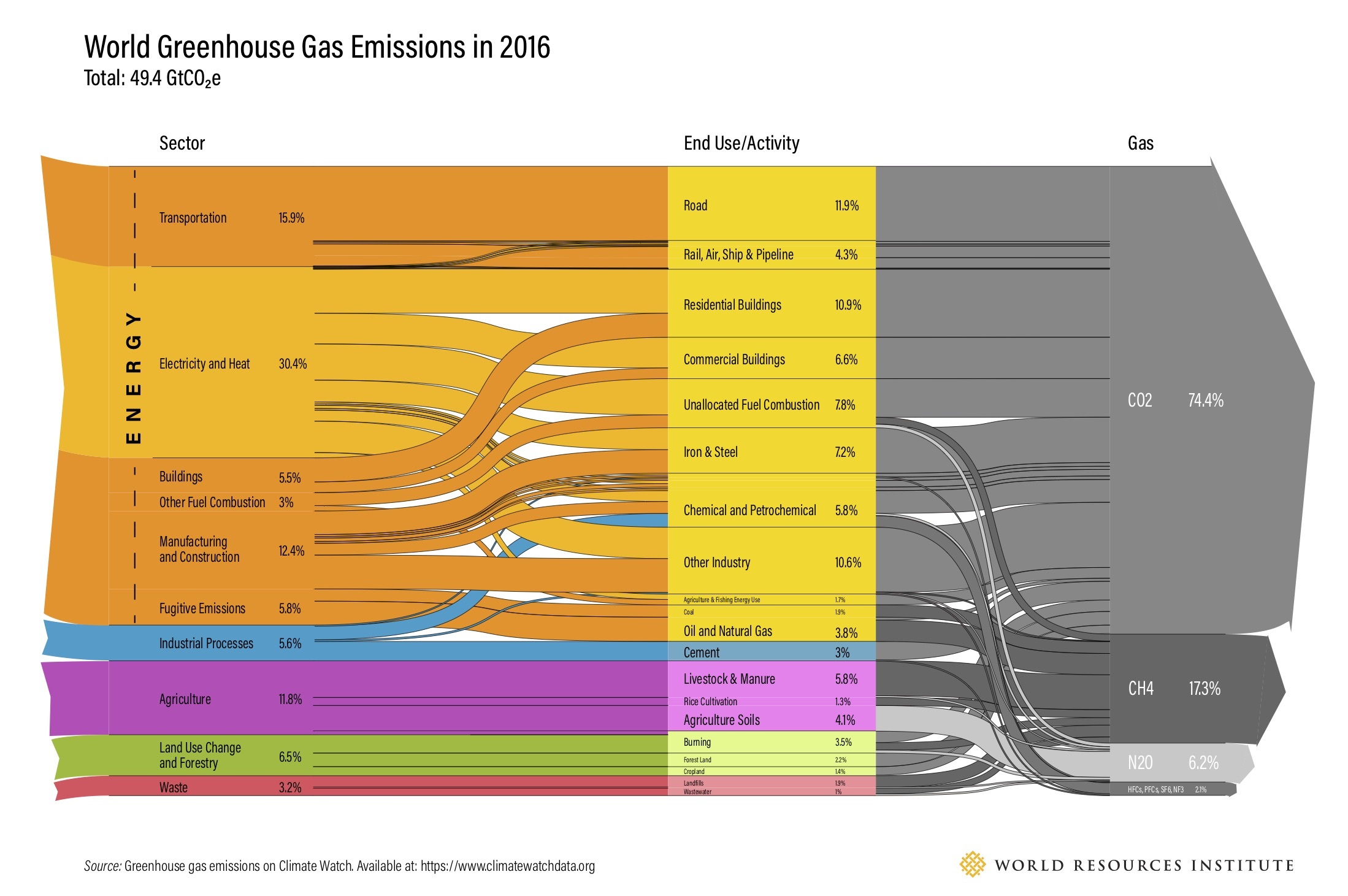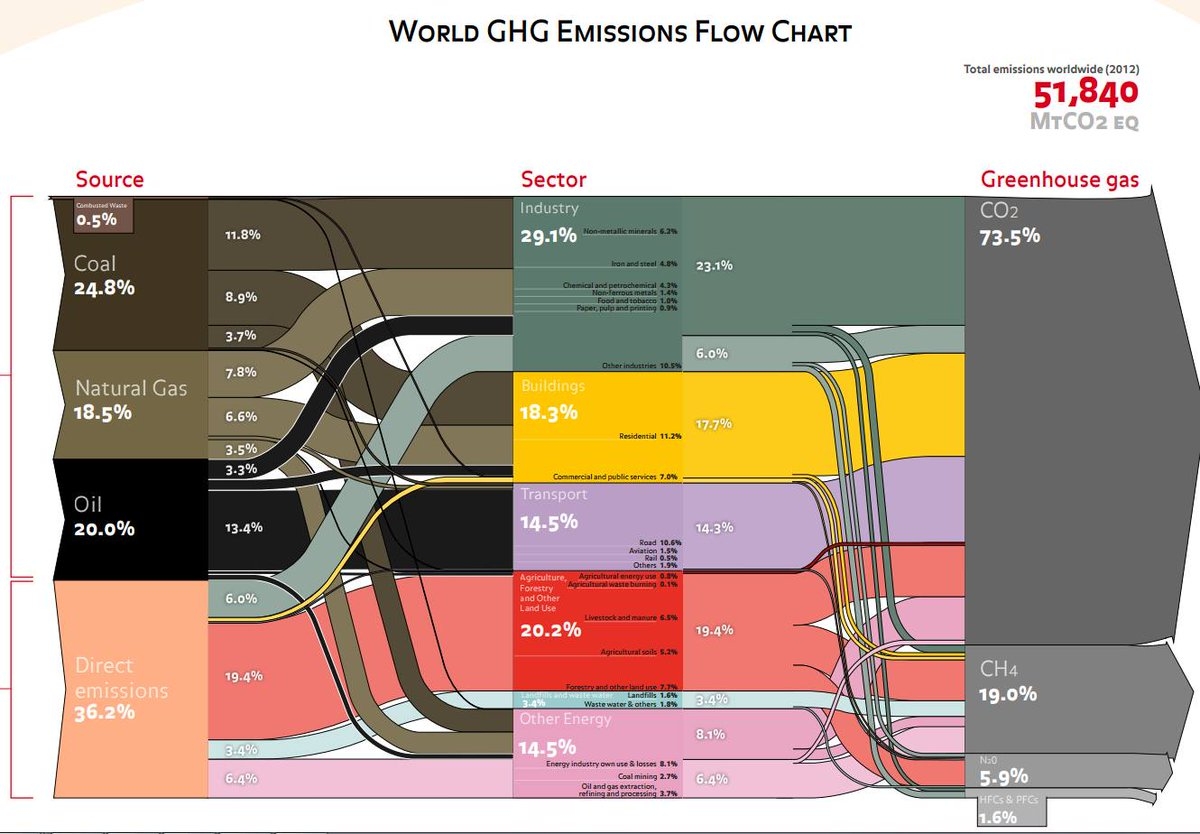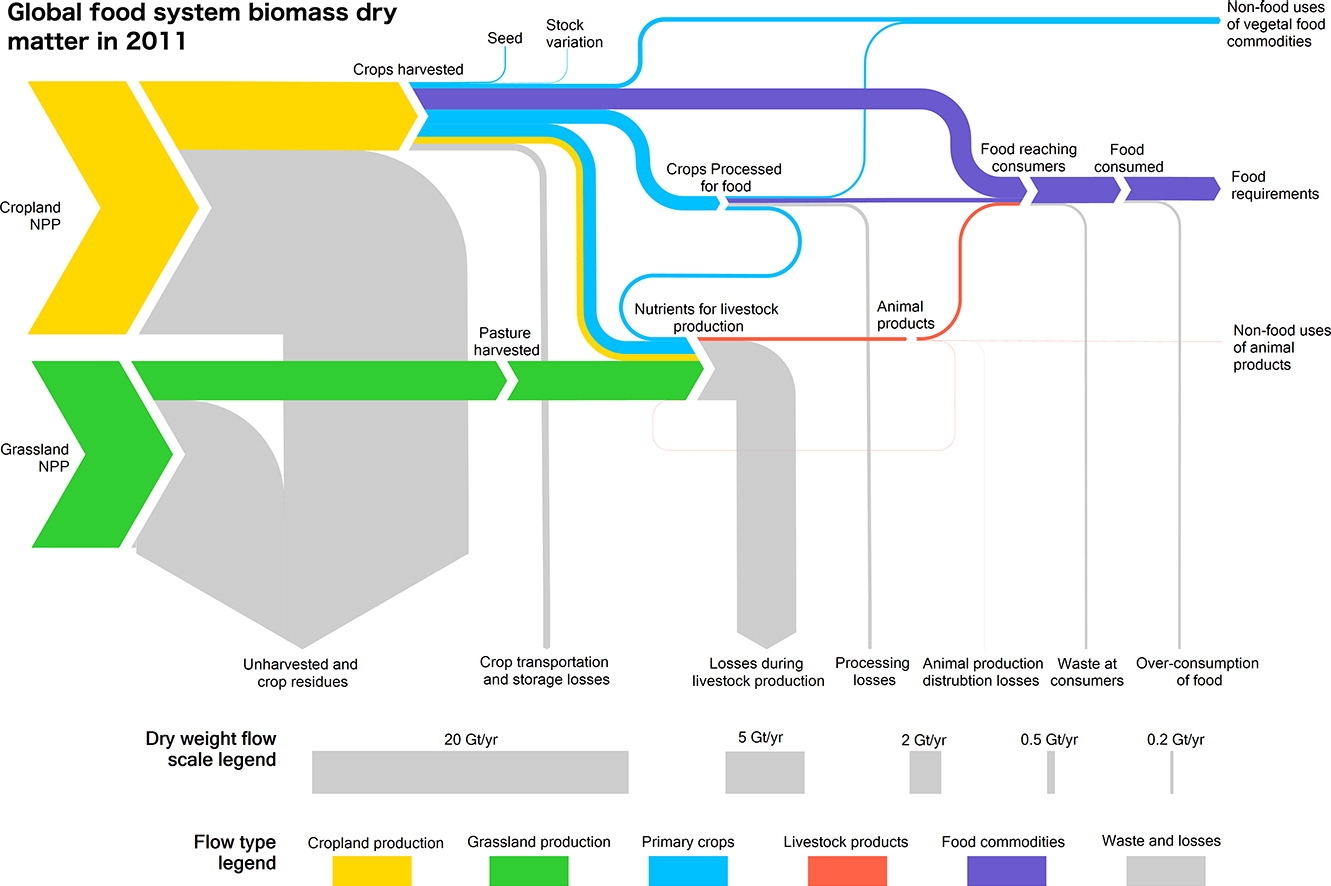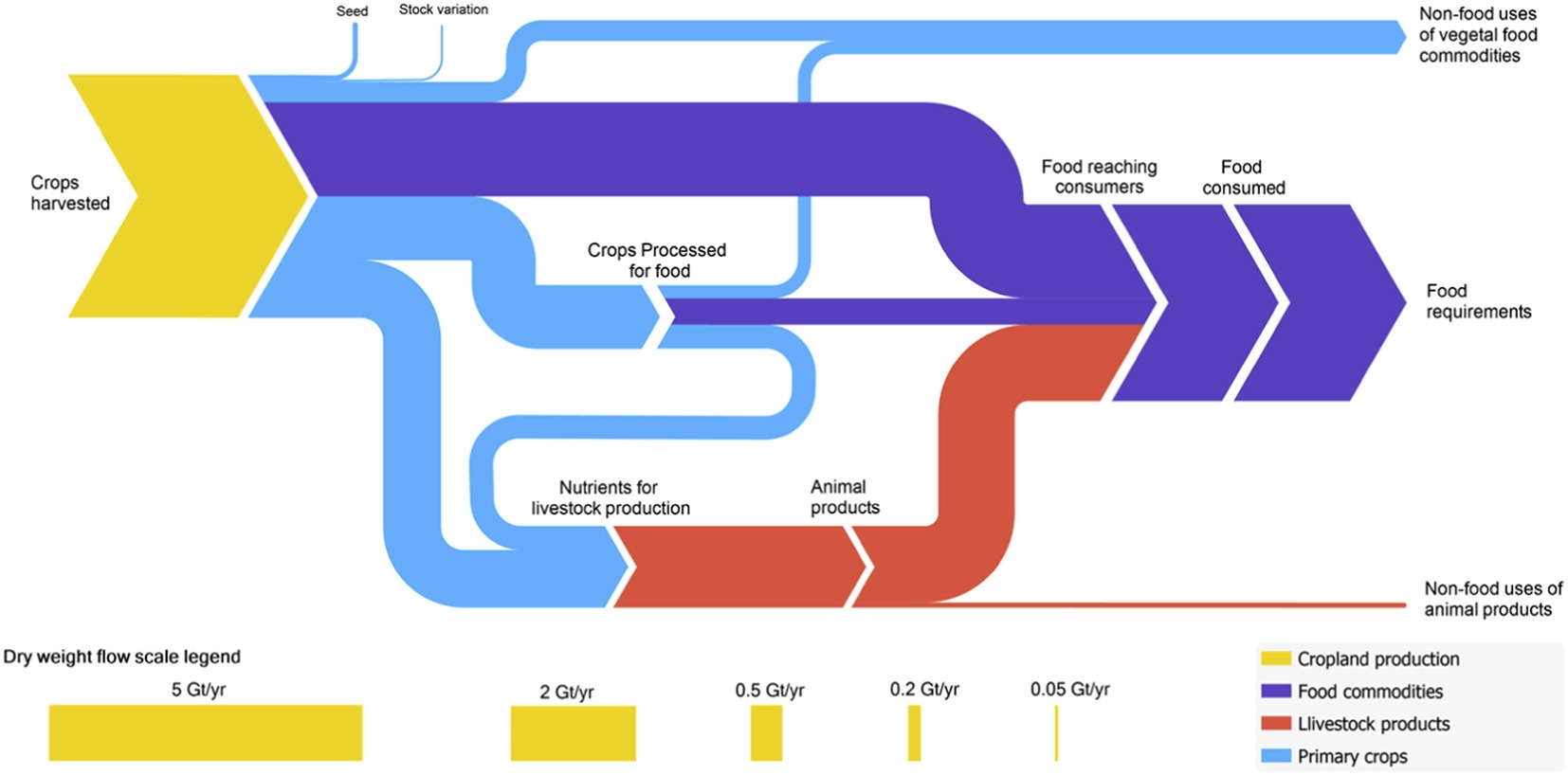Fresh off the press last week is DNVGL’s Energy Transition Outlook 2020. This report is a “forecast of the world’s most likely energy future through to 2050” and in my opinion this is really good information. The new edition already factors in the effects of the pandemic.
The spread on pages 122/123 has the following Sankey diagrams, a comparison of the global energy landscape in 2018 and the forecast for 2050:
The individual flows are not labeled with quantities, but we get an idea from the blue stream, that represents 27 PWh/yr electricity in 2018 and 60 PWh/yr in 2050. “One striking change on the supply side of the picture is the emergence of solar PV and wind at the expense of coal and oil. Electrification more than doubles through to 2050, which leads to an increase in the overall system efficiency.”
Make sure to download your copy of the DNVGL Energy Transition Outlook 2020, to study the global energy flow Sankey diagram in more detail.




